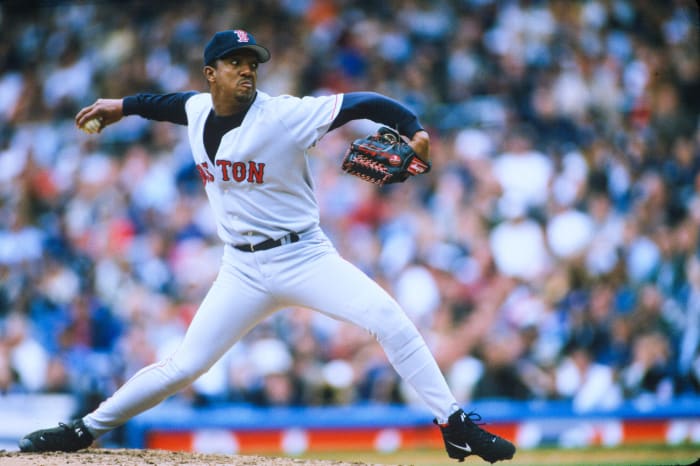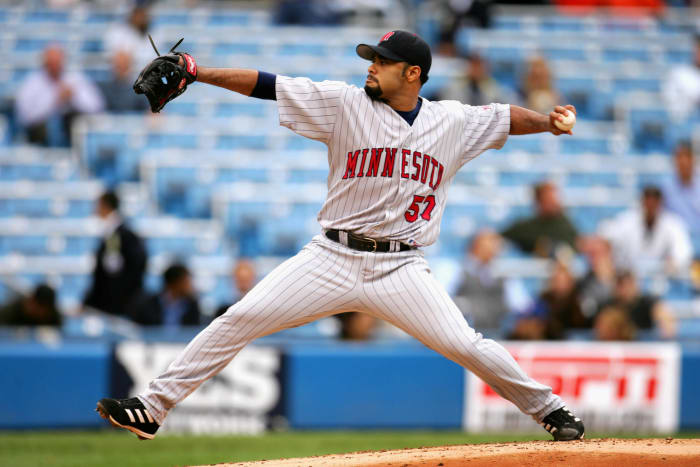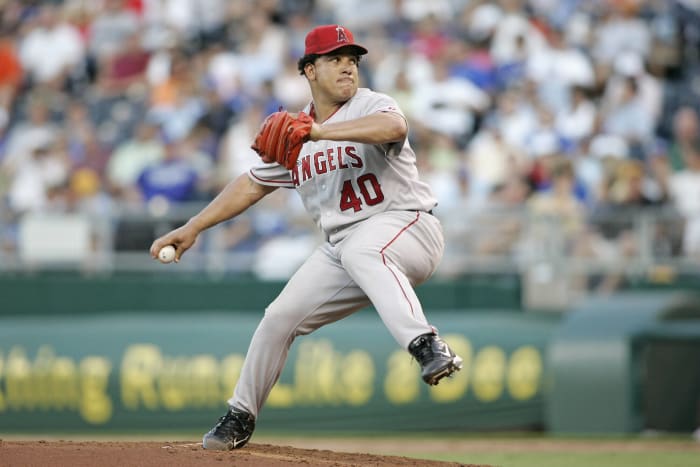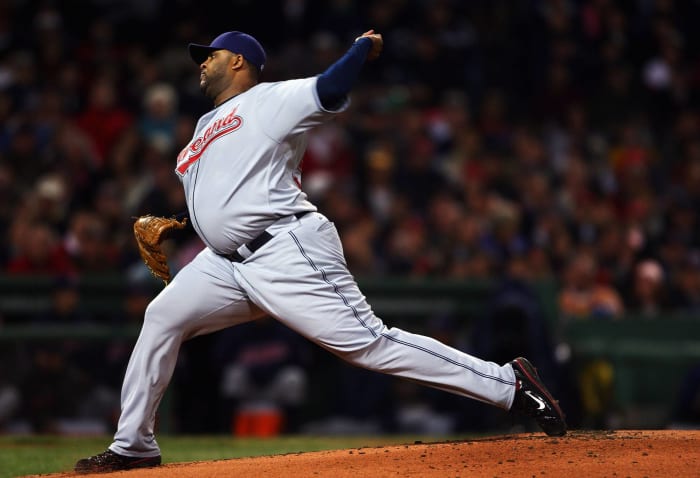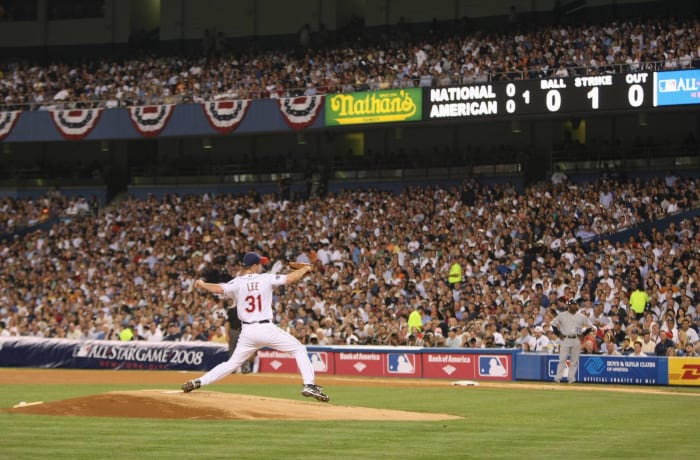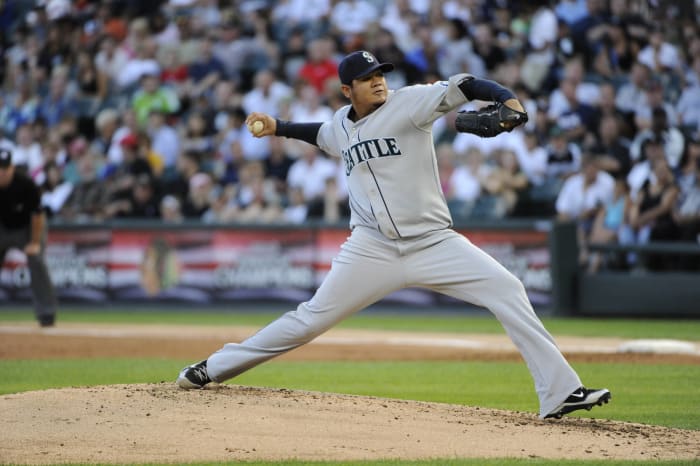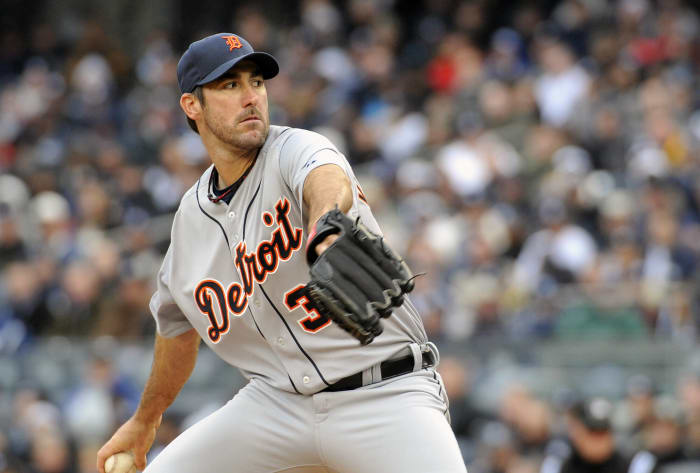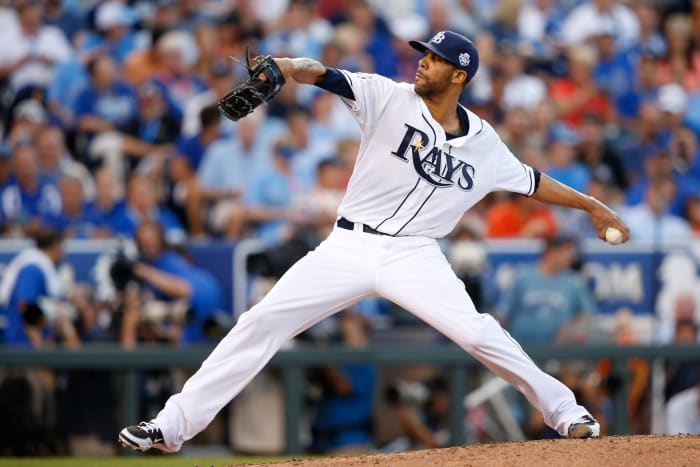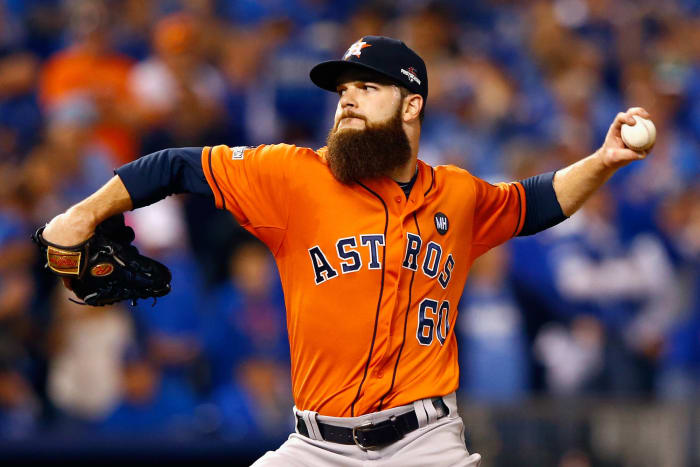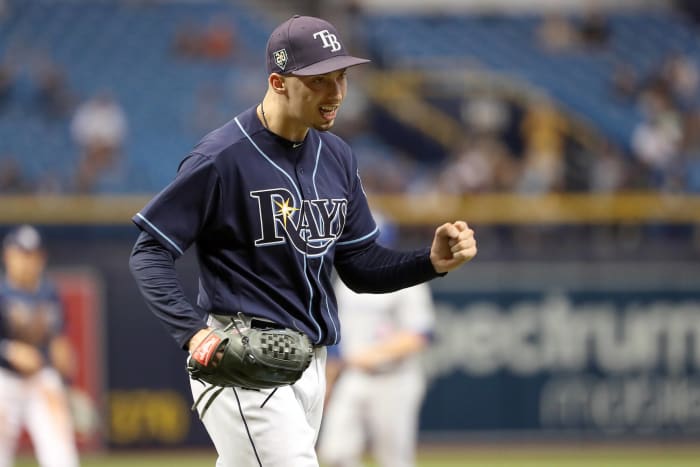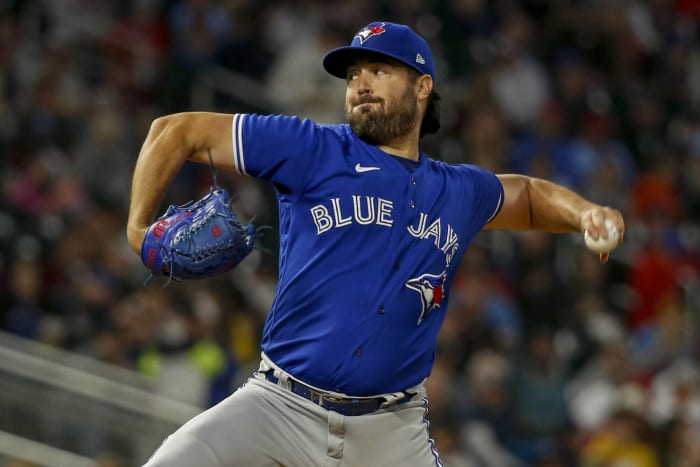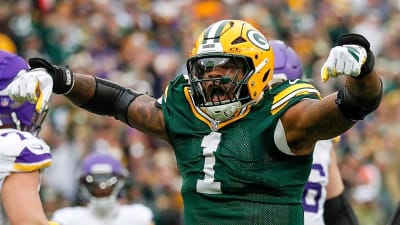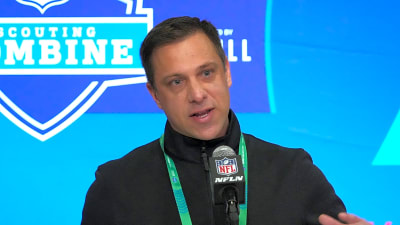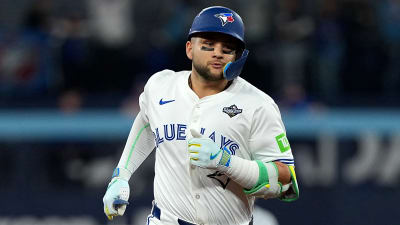Cy Young pitched in a rather different era of baseball. However, he remains a famous name thanks to the Cy Young Award. Each year, the American League and National League hand out an award for the best pitcher that season, or at least that is the goal. As the years have gone on, the criteria voters use for the Cy Young have changed. We can chronicle those changes as we catalog every American League Cy Young winner since 2000.
Rich Pilling/MLB via Getty Images
If we had started a year earlier, we also would have started with Pedro, who won the NL Cy Young with the Expos in 1997. By 2000, he was with the Red Sox and putting up incredible numbers. While his record fell from 23-4 in 1999 to 18-6 (at a time when 20 wins was a “magic” number to some pundits), Pedro dropped his ERA from a great 2.07 to an unheard-of 1.74. While Martinez would lead MLB in ERA twice more, this was his last Cy Young.
Focus on Sport/Getty Images
Clemens had plenty of hardware by 2001, and now he was pitching with the Yankees. Both of those things likely helped him win his sixth Cy Young. Also, the fact win-loss record still meant a lot to many voters. Clemens went 20-3, but with a 3.51 ERA. Even so, the 38-year-old got to add another Cy Young to his collection.
Jed Jacobsohn/Getty Images
Zito had a reputation for being an oddball, but he also would take the ball and go out there time and time again. Three times in his career, Zito led MLB in games started. Sure, it’s not the most impressive stat, but it’s something. Yes, Zito’s 23 wins with the Athletics helped, but his 2.75 ERA is belied by a 3.87 FIP. Of course, in 2002, voters weren’t paying attention to FIP.
Al Bello/Getty Images
Famously, “Doc” Halladay struggled early in his career. In 2000, he posted a 10.64 ERA with the Blue Jays. He went down to the minors to completely retool his approach. In 2002, Halladay made his first All-Star Game, and then in 2003, he won a Cy Young for the Blue Jays. He was bolstered by leading MLB with 266 innings pitched and a whopping nine complete games. Halladay was en route to the Hall of Fame, though sadly, he wouldn’t live to see it. In 2017, Halladay died in a plane crash, leading to his posthumous induction.
Al Bello/Getty Images
The offensive environment was elevated in 2004 (whatever could have led to that?), so Santana’s 2.61 ERA led the American League, as did his 2.92 FIP. Additionally, the Twins starter racked up 265 strikeouts to lead the AL as well, making Santana an obvious choice for the Cy Young.
G. N. Lowrance/Getty Images
These days, Colon is best remembered for pitching 21 years in MLB, sticking around until he was 45. He was a solid pitcher, sure, but his 2005 Cy Young win is perhaps the last of the “Wins!” victories. Colon had a 3.48 FIP and struck out a mere 6.3 batters per nine innings. The only stat he led the American League in was wins (21). Meanwhile, Santana was out there leading the AL in strikeouts and WHIP with a 2.87 ERA. However, he only had 16 wins, so…
Ron LeBlanc/WireImage
Hey, at least in 2006, Santana got his second Cy Young (even if it should have been his third). He was undeniable this year, as he led not just the AL but MLB in ERA, strikeouts, FIP, WHIP, and more. Santana did all that while making 34 starts. Owing to a relatively short career and a lack of the counting stats Hall voters have long loved (including wins), Santana fell off the Hall ballot after one year, leaving him in the Hall of Very Good.
Elsa/Getty Images
Well, Sabathia led the majors in innings pitched in 2007, so there’s that. His 3.21 ERA and 3.14 FIP were also quite good, if not remarkable. John Lackey led the AL in ERA at 3.01, and Josh Beckett hit the 20-win mark, but all in all, Sabathia managed to win his one Cy Young. That, combined with 250 wins being the new 300 to a certain kind of voter, may get Sabathia into the Hall of Fame.
Nick Laham/Getty Images
Cleveland got itself back-to-back Cy winners in Sabathia and Lee. Lee’s win was a bit clearer cut, though. Yes, he had a 22-3 record, but he also led the American League with a 2.54 ERA and 2.83 FIP. Also, Lee’s elite command led to him walking a mere 1.4 batters per nine innings. If you are below two on that front, you’ve really done something special.
Bruce Kluckhohn/Getty Images
Greinke was unremarkable to start his career, though he was also dealing with anxiety. The dude always loved to pitch, though, obviously, given that he hit the 20-year mark in MLB. He would have some big years with other teams and become a Gold Glove guy, which helps his Hall resume. Greinke won his one Cy with the Royals, bolstered by a 2.16 ERA, a significant number in 2009.
Ron Vesely/MLB Photos via Getty Images
In 2010, the “Wins!” voters saw their era die for good. Hernandez led the AL with 249.2 innings and led the majors with a 2.27 ERA. However, a lack of run support from the Mariners led to him posting a 13-12 record. Back in the day, that would have meant “King Felix” had no chance of winning the Cy Young. By this point, thorough thinkers were earning voting opportunities. Hernandez won the Cy Young comfortably, even beating Sabathia and his 21 wins.
Focus on Sport/Getty Images
Verlander had won Rookie of the Year with the Tigers in 2006. By 2011, he was one of the best pitchers in baseball. Verlander won the “Pitching Triple Crown” by leading the AL in wins, ERA, and strikeouts. This led to him winning the Cy Young and becoming the first pitcher since Clemens in 1986 to win the AL Cy Young and the AL MVP in the same season.
Jamie Squire/Getty Images
Price, like Verlander, was a No. 1 overall pick. They would become teammates in Detroit (briefly), but not until after Price won his sole Cy Young. He had 20 wins, sure, but he also led the American League with a 2.56 ERA, and getting over the 200-strikeout mark likely helped.
Christopher Pasatieri/Getty Images
Scherzer was a teammate of Verlander’s when he won a Cy Young. His 21-3 record likely helped with some voters, and his 2.90 ERA, while good, did not lead the American League. His WHIP was the lowest in the AL, at least. Scherzer wasn’t an obvious winner, but he was as good of a choice as anybody. Given his future track record, it feels like a good call in hindsight.
Hannah Foslien/Getty Images
There was a five-year stretch where Kluber was arguably the best pitcher in the American League, and it started with his Cy Young win in 2014. Making 34 starts with Cleveland, Kluber’s 2.44 ERA did not lead the American League, but his 2.35 FIP did. By this point, that meant something to a lot of voters. It also didn’t hurt that he struck out 10.3 batters per nine innings.
Jamie Squire/Getty Images
Keuchel is probably the first “Wait, he won a Cy Young?” guy on this list. Maybe it’s because he really fell off in his thirties, part of why he has a career 4.02 ERA and 4.00 FIP. That feels right. Keuchel is a decent pitcher, but he was considered Cy-worthy for one season. Pitching for Houston, he led the AL in innings pitched and, yes, had 20 wins. All that said, he led the AL pitchers in bWAR, so Keuchel was a good call. He also won his second of five Gold Gloves, which hopefully didn’t factor in here.
Billie Weiss/Boston Red Sox/Getty Images
Okay, Porcello is the strangest winner on this list, to be sure. He never made an All-Star Game in his career, including when he won the Cy Young! In 2016, though, Porcello had a 22-4 record for the Boston Red Sox. He had a 3.15 ERA, the lowest of his career. Notably, Verlander had more first-place votes, but Porcello eked out a close win. Verlander and Kluber had better seasons, but somehow, Porcello got the win.
Kamil Krzaczynski/USA TODAY Sports
Speaking of Kluber! This was the fourth season in his dominant five-year stretch. Once again pitching for Cleveland, Kluber had the best season of his career. He led MLB in ERA and WHIP and picked up three complete-game shutouts. Having fallen off, Kluber will likely end up in the Hall of Very Good.
Kim Klement/USA TODAY Sports
It looked like Snell’s 2018 campaign would be an outlier. He had 21 wins for Tampa, but he also had a 1.89 ERA to lead the American League. Snell was a fine pick for the Cy Young. He had a couple more years in Tampa before moving to San Diego. It took him some time to get going, but in 2023, he led MLB in ERA, a reminder of what he can do when he puts it all together.
20 of 23
Justin Verlander
Troy Taormina/USA TODAY Sports
By 2019, Verlander had left Detroit for Houston to try and win a World Series (it worked out, by the way). He finished second in the Cy Young vote his first full season with the Astros, but the next year, he went ahead and won it. Verlander led MLB in games and innings pitched, plus wins, but also in WHIP. His 2.58 ERA was also quite good.
Raj Mehta/USA TODAY Sports
This was the COVID-19 season, and some of the awards look a little weird in hindsight (shout out to Kyle Lewis, AL Rookie of the Year). Bieber’s Cy Young win for Cleveland stands the test of time. He managed to post a 1.63 ERA and 2.07 FIP, both of which led MLB. Bieber also struck out a whopping 14.2 batters per nine innings.
Bruce Kluckhohn/USA TODAY Sports
Ray was long a guy who struck out a lot of batters. However, he also earned a reputation for being homer-prone, and his strikeout rates would be paired with lackluster ERAs. In 2021, Ray put it all together for the Blue Jays. He led the AL in innings pitched and struck out 11.5 batters per nine innings, but at the same time, he led the AL in ERA and WHIP. By the next season, he was with Seattle, and his ERA was back up to 3.71.
23 of 23
Justin Verlander
Bill Streicher/USA TODAY Sports
Verlander had effectively missed all of 2020 and 2021 with an arm injury. When 2022 started, he was in his age-39 season. He already had punched his ticket to the Hall of Fame. Why keep going? Well, because apparently, he was still an elite pitcher. Verlander led MLB with a 1.75 ERA in 28 starts, and he led MLB in WHIP as well. He even won another World Series ring. A Hall of Famer leveled up to being the best pitcher of his generation.
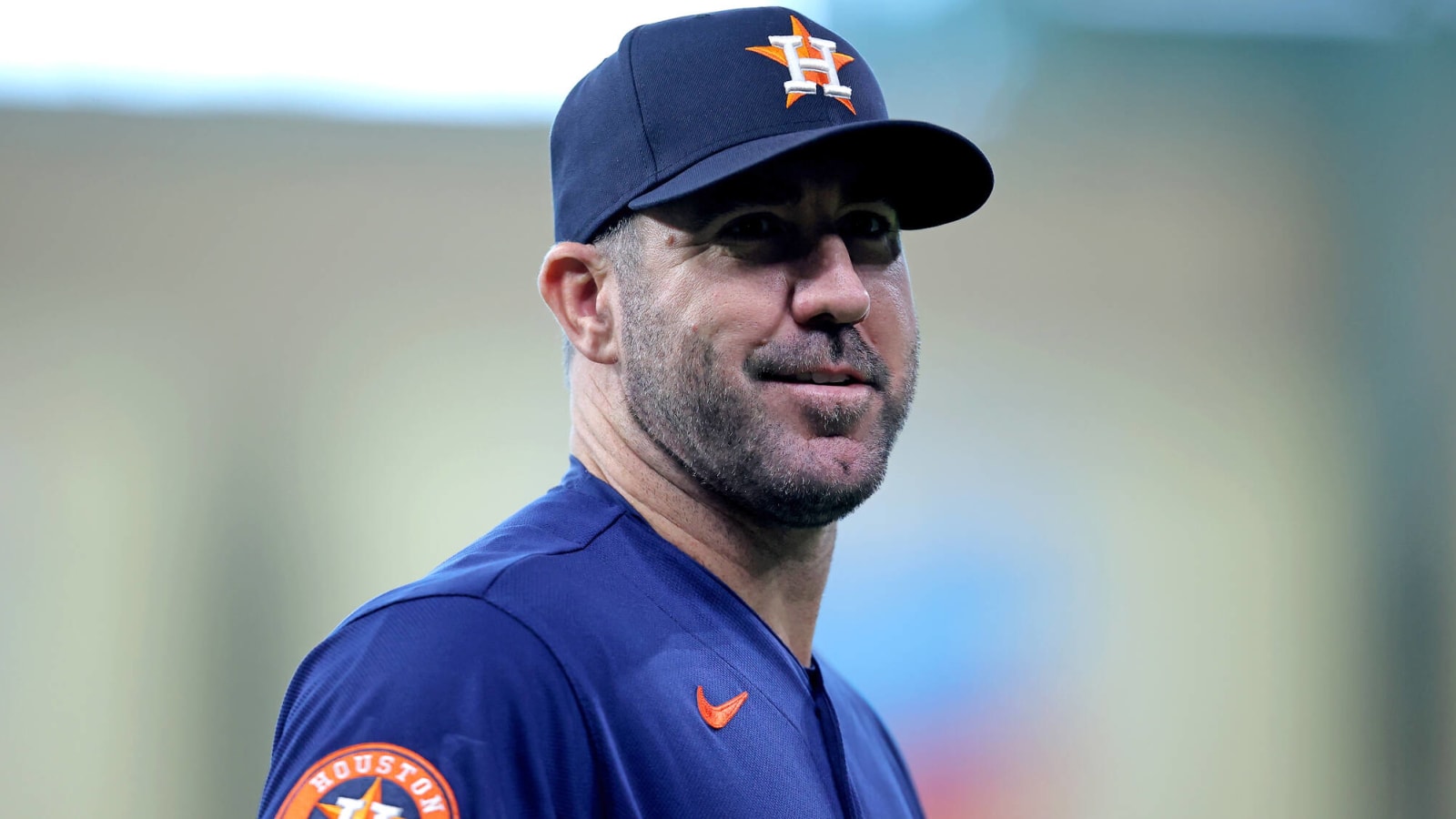
 +
+
